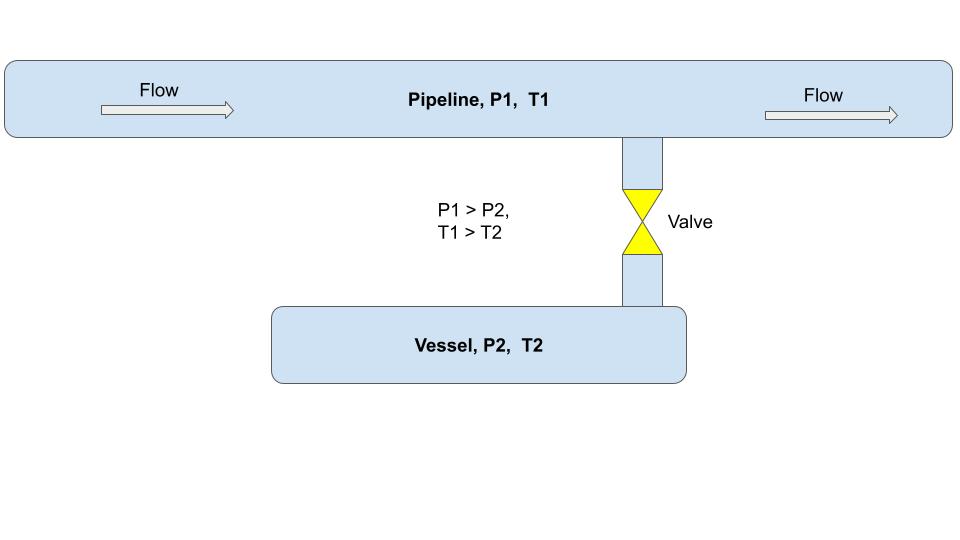I have stuck with the engineering calculation for my work
Suppose that we have a underground pipeline with constant flow of liquid, which connected with closed underground vessel through the valve (vessel are full of same liquid).
In pipeline we know pressure P1, temperature T1, in vessel we know pressure P2, temperature T2, volume of liquid in vessel V0 (vessel is full). P1 > P2, T1 > T2. Pipeline and vessel are made of steel.
Let's assume that we opened the valve. Pressure in vessel will become equal to pressure in a pipeline, due to this, a little amount of liquid is added to the vessel, with the temperature T1 > T2. Now we have volume of liquid in a vessel V1 = V0 + Vadded.
Then we closed the valve. Due to temperature difference, small amount of added volume of liquid will start to cool down. Volume of added liquid will decrease slightly. When the cooling process is over, the pressure in the vessel will be set at the level of P3, which is P1 > P3 > P2. Volume of a liquid in a vessel V2 = V0 + Vadded - Vcooled.
The question is - how to calculate P3 if we know all of initial parameters (P1, P2, T1, T2, all geometric parameters, all liquid properties)?
P.S. In my calculations, I got that final pressure P3 is independent of the initial pressure in a vessel P2. And this result really confused me, so I want to ask.
Full description of analyzed system in numbers: Type of fluid in the pipeline and in the vessel - oil, density = 850 $kg/m^3$, coefficient of thermal expansion b = $8.31 * 10^{-4}$ $K^{-1}$, oil compressibility k = $7*10^{-10}$ $Pa^{-1}$. The Pipeline and vessel are made of steel, bulk modulus = $2 * 10^{11}$ Pa. Pressure in the pipeline P1 = 2 MPa, temperature of fluid in the pipeline T1 = 286 K. Initial pressure in the vessel P2 = -0.1 MPa, initial temperature of fluid in the vessel T2 = 280 K. Diameter of the pipeline = 1 meter, diameter of the vessel = 1 meters, length of pipeline = infinity, length of the vessel = 15 kilometers.
My analysis: I have divided the process into three stages:
- Adding a volume of "warm" liquid to the vessel
- (after closing the valve) Reducing the volume of added "warm" liquid due to cooling,
- Reducing the pressure in the vessel due to volume reduction of "additional" liquid.
For each stage, I obtained the following ratios:
Additional volume of "warm" liquid: $$\Delta V_{warm} = V_0*k*(P_1 - P_2)$$
Reducing the volume of added "warm" liquid due to cooling: $$\Delta V_{cooling} = \Delta V_{warm}*b*(T_1 - T_2)$$
Reducing the pressure in the vessel due to volume reduction: $$(P_3 - P_1)*k*\Delta V_{warm} = - \Delta V_{cooling}$$ then: $$P_3 = \frac{-\Delta V_{cooling} + \Delta V_{warm} * k * P_1}{\Delta V_{warm} * k }$$ then after substitution: $$P_3 = \frac{b*(T_2 - T_1) + k*P_1}{ k }$$ According to the ratio I obtained, $P_3$ does not depend on $P_2$, so I thought I was wrong.

